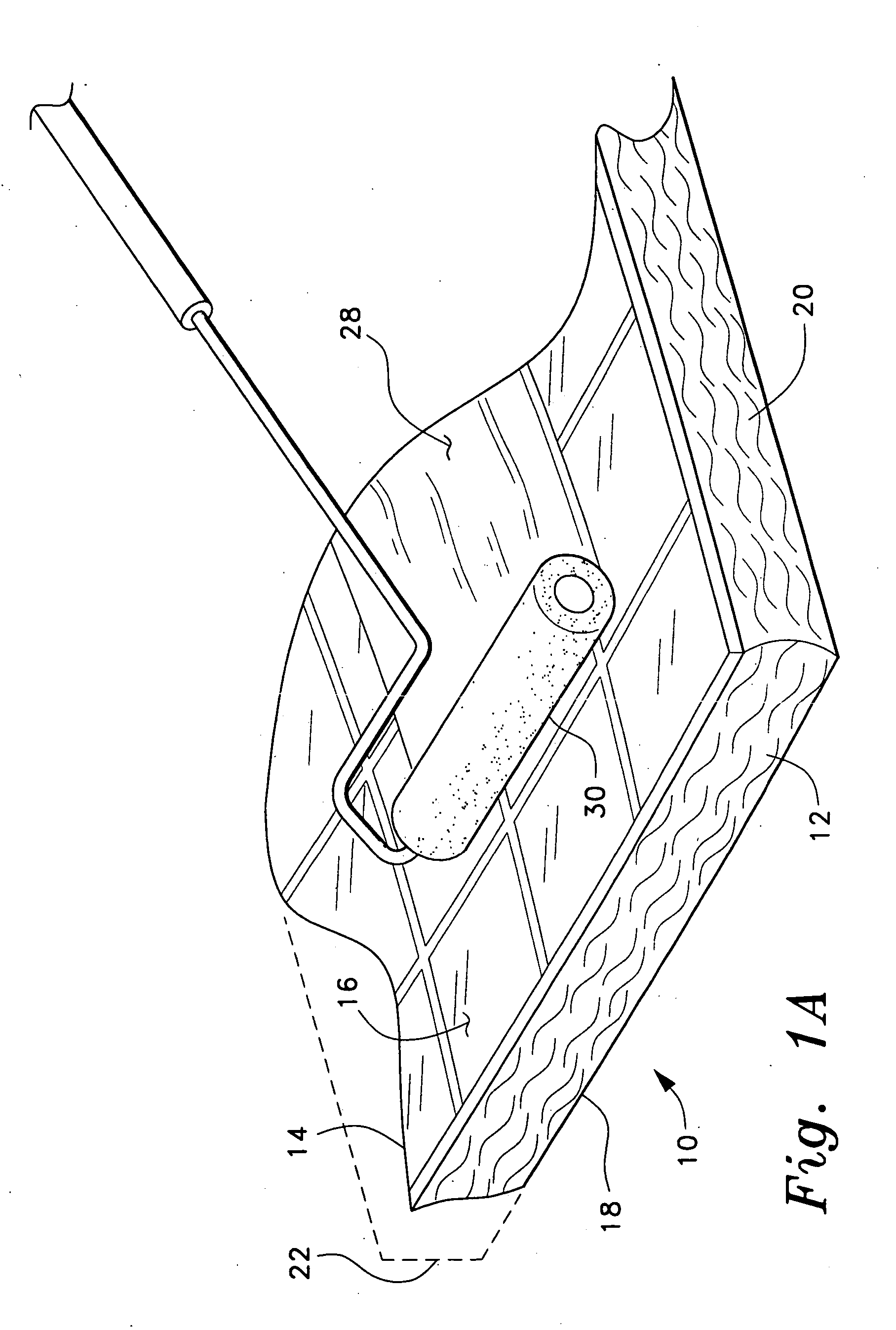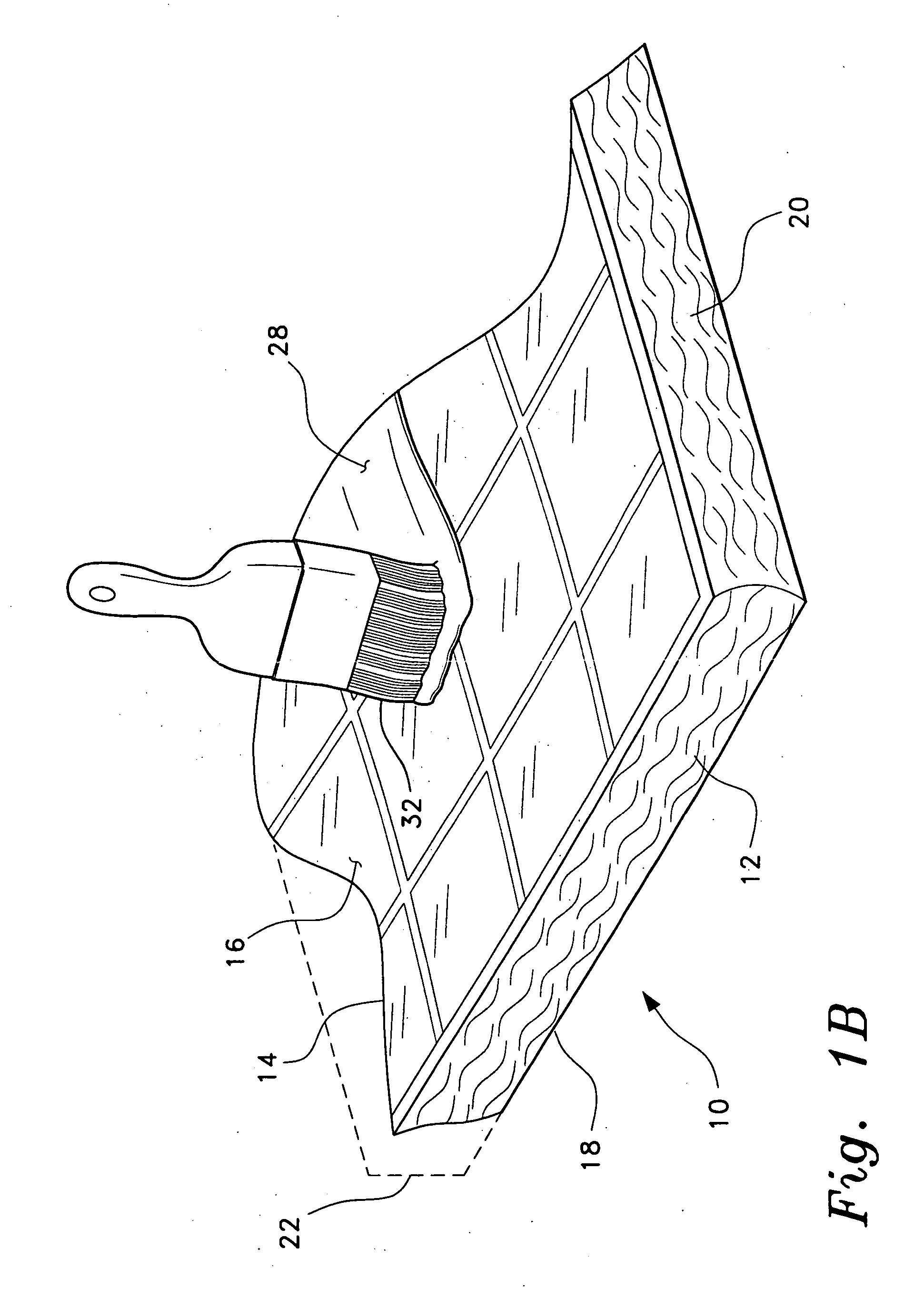Method of applying a heat reflective coating to a substrate sheet
a technology of heat reflective coating and substrate sheet, which is applied in heat-proofing, natural mineral layered products, transportation and packaging, etc., can solve the problem that glass or plastic material per se of such panels is not particularly good thermal insulation, and achieve the effect of effective blocking and reflecting critical, increasing insulating efficiency, and resisting growth
- Summary
- Abstract
- Description
- Claims
- Application Information
AI Technical Summary
Benefits of technology
Problems solved by technology
Method used
Image
Examples
Embodiment Construction
[0037] The present invention comprises various embodiments of a method of applying a heat reflective coating to a building construction panel, thereby increasing the insulation efficiency of the panel. The present invention also encompasses composite panels formed by applying the heat reflective coating to various types of building construction panels, as well. While the present invention is directed particularly to the coating of fibrous insulation batts with a heat reflective coating material, it may also be directed to the coating of other types of building construction panels as well.
[0038]FIGS. 1A through 1C provide perspective views illustrating the process of coating various types of building construction panels with a heat reflective coating in accordance with the present invention. In FIGS. 1A through 2, a generally flat, planar panel or batt 10 of insulation material formed of loose fibrous material 12 (e.g., fiberglass, mineral wool, etc.) is illustrated. The batt 10 has...
PUM
| Property | Measurement | Unit |
|---|---|---|
| Time | aaaaa | aaaaa |
| Efficiency | aaaaa | aaaaa |
| Reflection | aaaaa | aaaaa |
Abstract
Description
Claims
Application Information
 Login to View More
Login to View More - R&D
- Intellectual Property
- Life Sciences
- Materials
- Tech Scout
- Unparalleled Data Quality
- Higher Quality Content
- 60% Fewer Hallucinations
Browse by: Latest US Patents, China's latest patents, Technical Efficacy Thesaurus, Application Domain, Technology Topic, Popular Technical Reports.
© 2025 PatSnap. All rights reserved.Legal|Privacy policy|Modern Slavery Act Transparency Statement|Sitemap|About US| Contact US: help@patsnap.com



